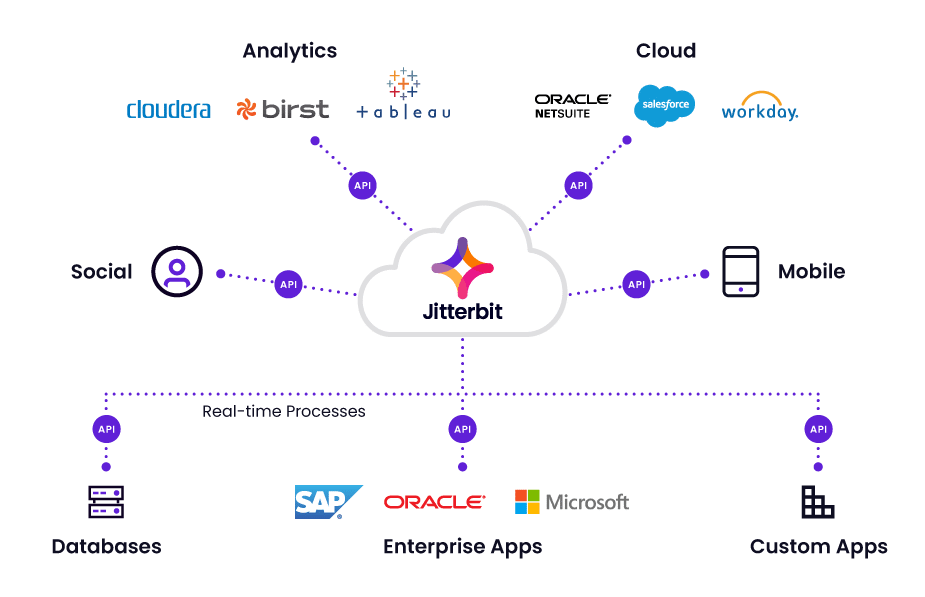APIs (Application Programming Interfaces) have transformed the digital landscape, enabling different software systems to connect and communicate seamlessly. API integration is a crucial process for modern applications, allowing businesses to improve functionality, streamline operations, and foster innovation. This article will explore everything you need to know about API integration: what it is, why it’s essential, how it works, and best practices for implementation.
What is API Integration?
API integration refers to the process of connecting different software applications using APIs, enabling them to communicate and share data. An API acts as a bridge, allowing two systems to interact efficiently, enhancing the user experience and functionality of digital services. For instance, when a mobile app connects to a payment gateway, it uses an API to ensure secure and smooth transactions.
API integration is essential in today’s digital age, where systems are constantly sharing information across multiple platforms. Whether it’s integrating customer data across CRM systems or enabling real-time analytics for business intelligence tools, APIs have become the backbone of software interconnectivity.
Importance of API Integration
With the rapid pace of digital transformation, businesses rely on a variety of software tools to manage operations. However, having disconnected systems can lead to inefficiencies, data silos, and errors. API integration helps eliminate these issues by:
- Improving efficiency: By connecting different applications, API integration allows data to flow seamlessly between systems, reducing manual tasks and streamlining processes.
- Enhancing functionality: APIs enable businesses to add new features without building them from scratch, making it easy to upgrade applications with minimal effort.
- Reducing errors: With automated data flow between systems, API integration helps reduce human errors, enhancing accuracy and reliability.
- Providing scalability: As your business grows, APIs make it easier to integrate new applications and services without disrupting existing workflows.
Key Components of API Integration
To understand how API integration works, it’s essential to familiarize yourself with its core components:
- Endpoints: These are the points where the API communicates with other systems, essentially the ‘entry’ or ‘exit’ points in the integration process.
- Requests and Responses: This is the data exchange process where one application requests information, and the other application responds.
- Protocols: API communication happens through protocols, such as HTTP, REST, or SOAP. Each protocol has specific rules to manage data exchange.
- Authentication: Security is crucial in API integration, with methods like OAuth or API keys ensuring that only authorized parties access sensitive data.
These components come together to form a seamless API integration, allowing applications to communicate with each other efficiently and securely.
Types of API Integration
There are several types of API integrations, each suited to different use cases and systems:
- RESTful APIs (Representational State Transfer): These are the most common APIs due to their simplicity and flexibility, allowing applications to communicate using HTTP requests.
- SOAP APIs (Simple Object Access Protocol): SOAP APIs are highly secure and widely used in enterprise environments where structured data and strict protocols are required.
- GraphQL APIs: Known for enabling data retrieval in a single query, GraphQL APIs are popular in data-heavy applications where clients need flexibility in accessing specific data.
- Webhooks: Unlike traditional APIs that rely on requests, webhooks work on an event-driven basis, sending data automatically when certain events occur.
Choosing the right type of API is essential for a successful integration, as each comes with unique advantages and limitations.
How to Implement API Integration Successfully
Implementing API integration requires careful planning and testing. Here are steps to help guide you through the process:
1. Define Your Requirements
Understanding what you need from the integration will determine the API type and structure. Clearly outline the data you want to exchange, how frequently the systems need to communicate, and any specific functionality the integration should support.
2. Choose the Right API
Choosing the correct API type—REST, SOAP, GraphQL, or Webhooks—depends on your requirements, security needs, and preferred data format. Many third-party providers offer ready-made APIs that can help speed up the integration process.
3. Authentication and Authorization
Data security is paramount in any API integration. Choose appropriate authentication methods (e.g., OAuth, API keys) to ensure secure access, and set permissions for different levels of data access.
4. Build a Testing Environment
Testing the integration in a controlled environment helps catch any issues before they affect live systems. This step allows developers to refine the integration, ensuring data flows as expected and interactions are smooth.
5. Monitor and Maintain the Integration
API integrations require ongoing maintenance to ensure compatibility with software updates and to address potential issues that arise over time. Implement monitoring tools to detect and troubleshoot errors in real-time.
Best Practices for API Integration
To ensure a smooth and secure API integration, consider following these best practices:
- Use Standardized Protocols: Following industry standards, like REST or SOAP, simplifies integration and ensures compatibility with other systems.
- Document Your API: Comprehensive documentation helps developers understand how to use the API effectively and troubleshoot any issues.
- Implement Rate Limiting: Setting limits on the number of API requests helps prevent system overloads and protects against potential misuse.
- Regularly Update Security Measures: Protect your data by keeping authentication methods up to date and monitoring for vulnerabilities.
- Test Thoroughly: Testing is essential for identifying and resolving potential issues, ensuring a stable and efficient integration.
Following these practices will lead to a reliable and secure API integration that meets the business’s needs.
Common Challenges in API Integration
While API integration offers significant benefits, some common challenges include:
- Compatibility Issues: Not all APIs are compatible with every system. It’s important to evaluate compatibility early in the planning phase.
- Data Format Differences: Different APIs may use various data formats (JSON, XML, etc.), which can complicate integration if not accounted for.
- Security Vulnerabilities: APIs open new points of access, which can expose systems to security risks if not adequately protected.
- Error Handling: Poor error handling can lead to data inconsistencies and hinder system functionality. Implement robust error handling to manage unexpected issues.
By anticipating these challenges, you can develop solutions to mitigate them and create a more resilient integration process.
Benefits of API Integration for Businesses
Businesses across various industries can benefit from API integration in several ways:
- Enhanced Customer Experience: By connecting applications, businesses can provide a more seamless and unified experience for users.
- Improved Data Insights: Integrating APIs with analytics platforms allows businesses to make data-driven decisions.
- Streamlined Operations: Automating data flow across systems helps reduce manual processes, improving overall productivity.
- Increased Innovation: API integration enables businesses to explore new functionality and experiment with innovative features.
With API integration, businesses can unlock new possibilities, positioning themselves for growth and competitive advantage in the digital economy.
Conclusion
API integration is an essential part of modern software development, allowing different applications to communicate and share data. It improves efficiency, enhances functionality, and simplifies workflows, making it a vital tool for businesses in the digital age. By following best practices, addressing potential challenges, and maintaining security standards, businesses can leverage API integration to boost productivity and deliver a superior customer experience.
As businesses continue to rely on multiple applications, understanding and implementing effective API integration can help streamline processes, reduce errors, and enable smoother interactions across platforms. For any organization looking to scale, improve efficiency, and stay competitive, API integration is the key to success in today’s interconnected digital landscape.




